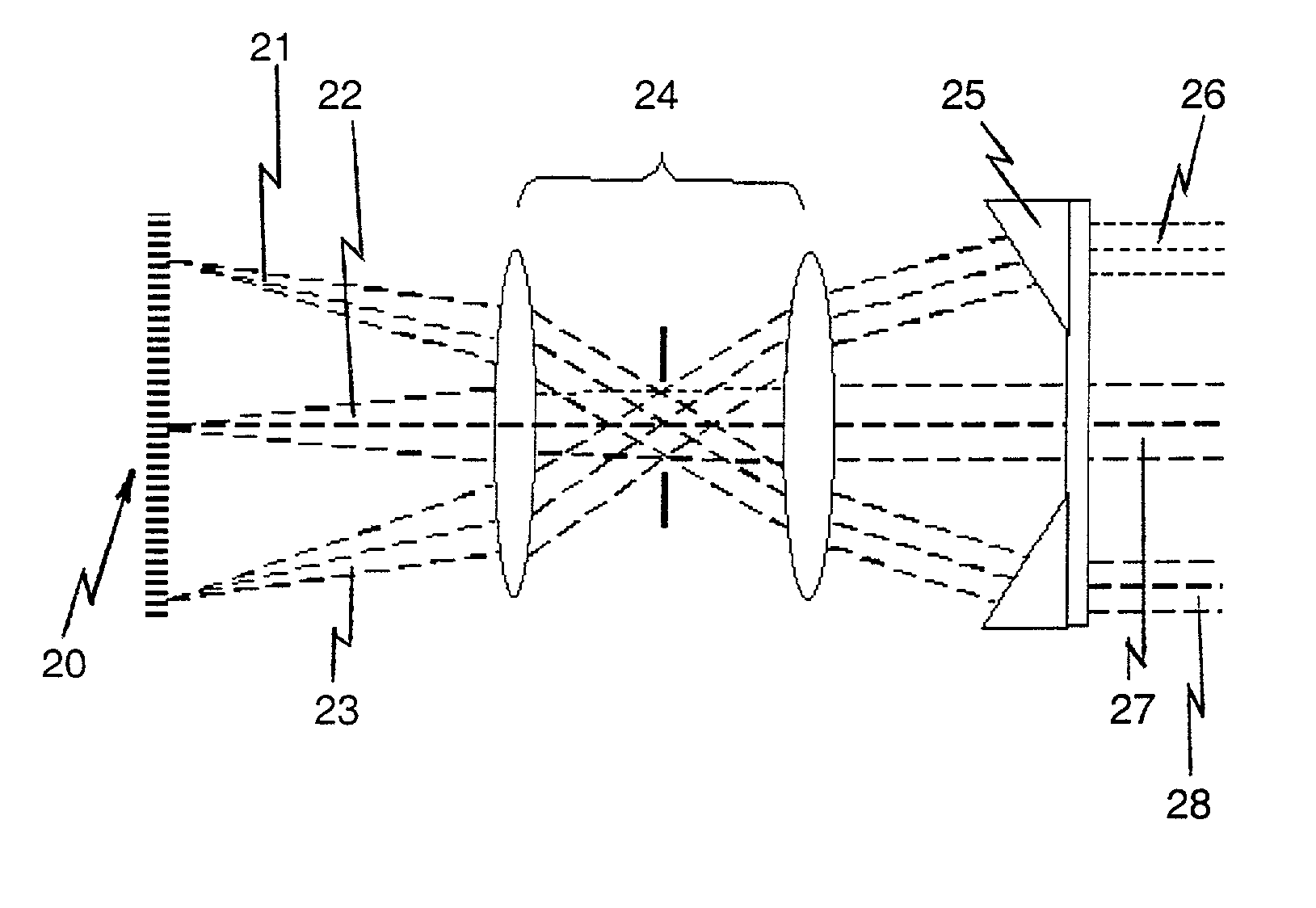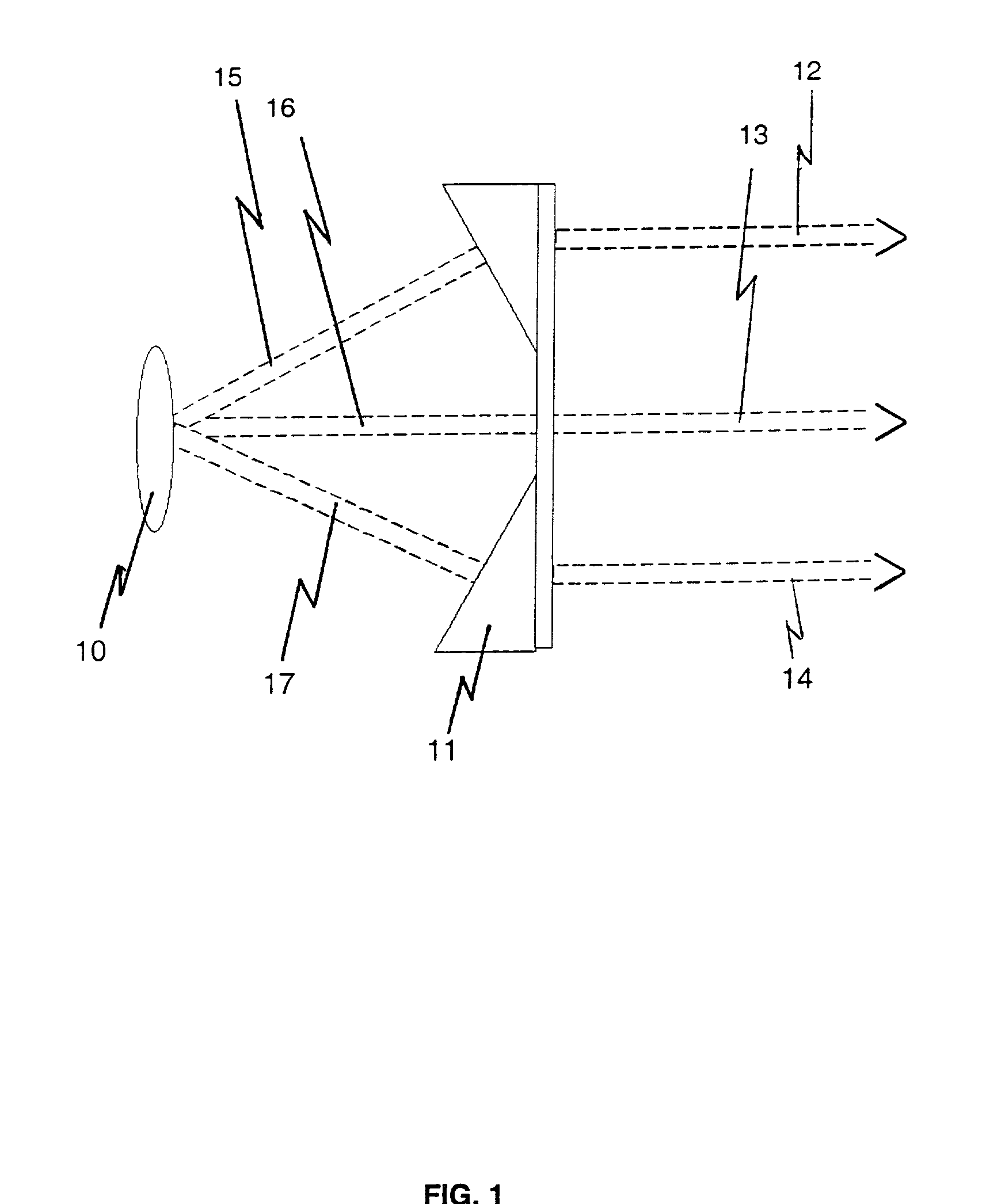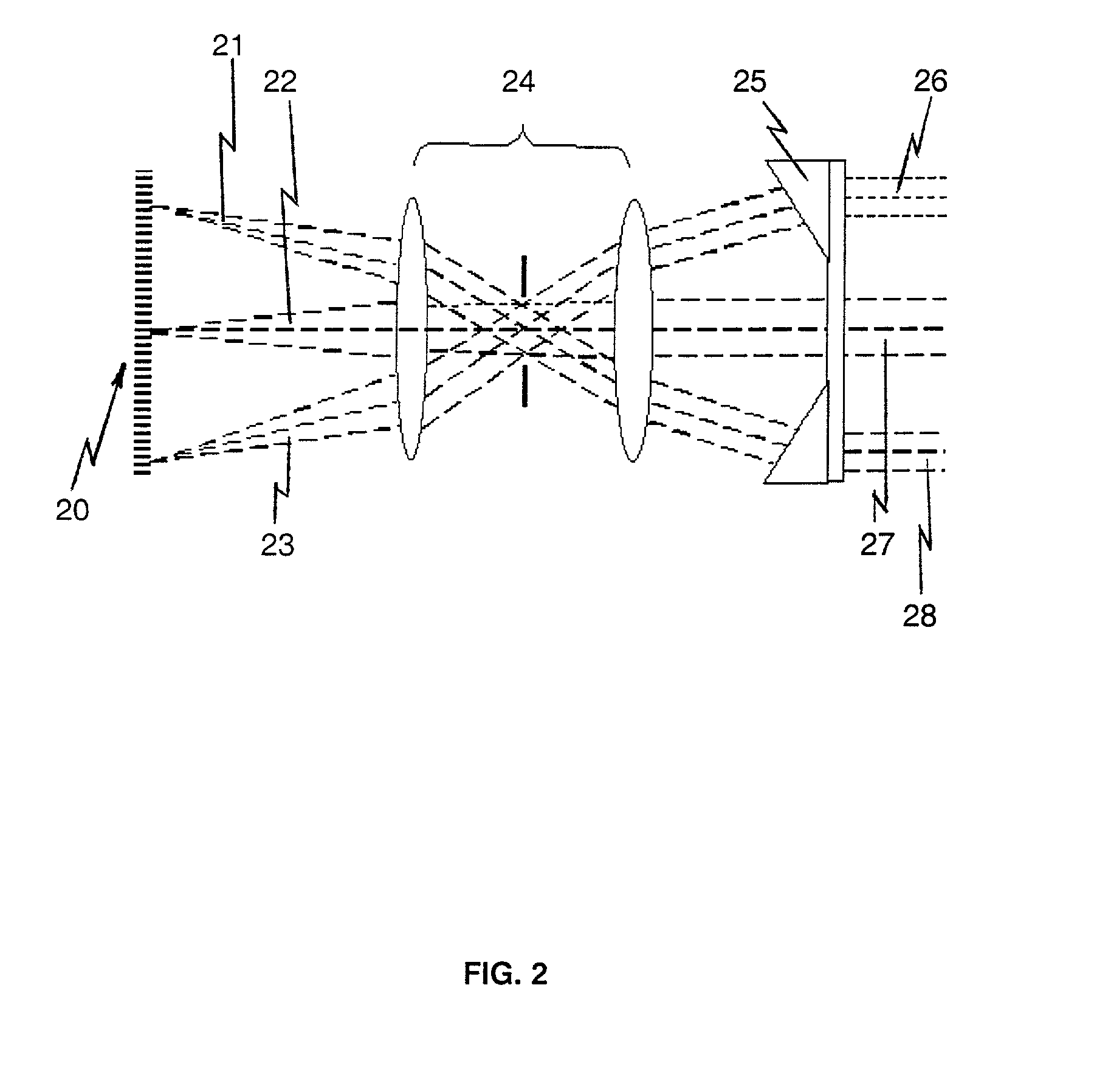Image integration and multiple laser source projection
a laser source and image integration technology, applied in the field of image integration and multiple laser source projection, can solve the problems of difficult enhancement of snr, many optical systems will have practical limits on the allowed aperture dimension and overall design complexity, and no system presently available allows for the combination of the various functions required for providing a fully functional
- Summary
- Abstract
- Description
- Claims
- Application Information
AI Technical Summary
Benefits of technology
Problems solved by technology
Method used
Image
Examples
Embodiment Construction
[0020] The invention described herein provides an apparatus and technique for improving sensor signal to noise ratio and in combination a target designator. The sensor may be an electro-optical imaging sensor or an IRS&T which displays distant targets as a moving point. There is described herein a sensor resolution enhancement that optically projects several identical narrow fields of view onto a system focal plane that accepts a wider, two-dimensional field of view. This can be useful for any visible, ultraviolet, or infra-red sensor system. This can be used to provide real-time single frame image integration to improve a signal-to-noise-ratio of a sensor. The same optical geometry that is used to divide the wide field of view of an imaging system can also be used in reverse to align the photon output from a two-dimensional array of photon emitter diodes so as to illuminate a distant target with increased brightness. This arrangement will work best if the collimating optics provide...
PUM
 Login to View More
Login to View More Abstract
Description
Claims
Application Information
 Login to View More
Login to View More - R&D
- Intellectual Property
- Life Sciences
- Materials
- Tech Scout
- Unparalleled Data Quality
- Higher Quality Content
- 60% Fewer Hallucinations
Browse by: Latest US Patents, China's latest patents, Technical Efficacy Thesaurus, Application Domain, Technology Topic, Popular Technical Reports.
© 2025 PatSnap. All rights reserved.Legal|Privacy policy|Modern Slavery Act Transparency Statement|Sitemap|About US| Contact US: help@patsnap.com



